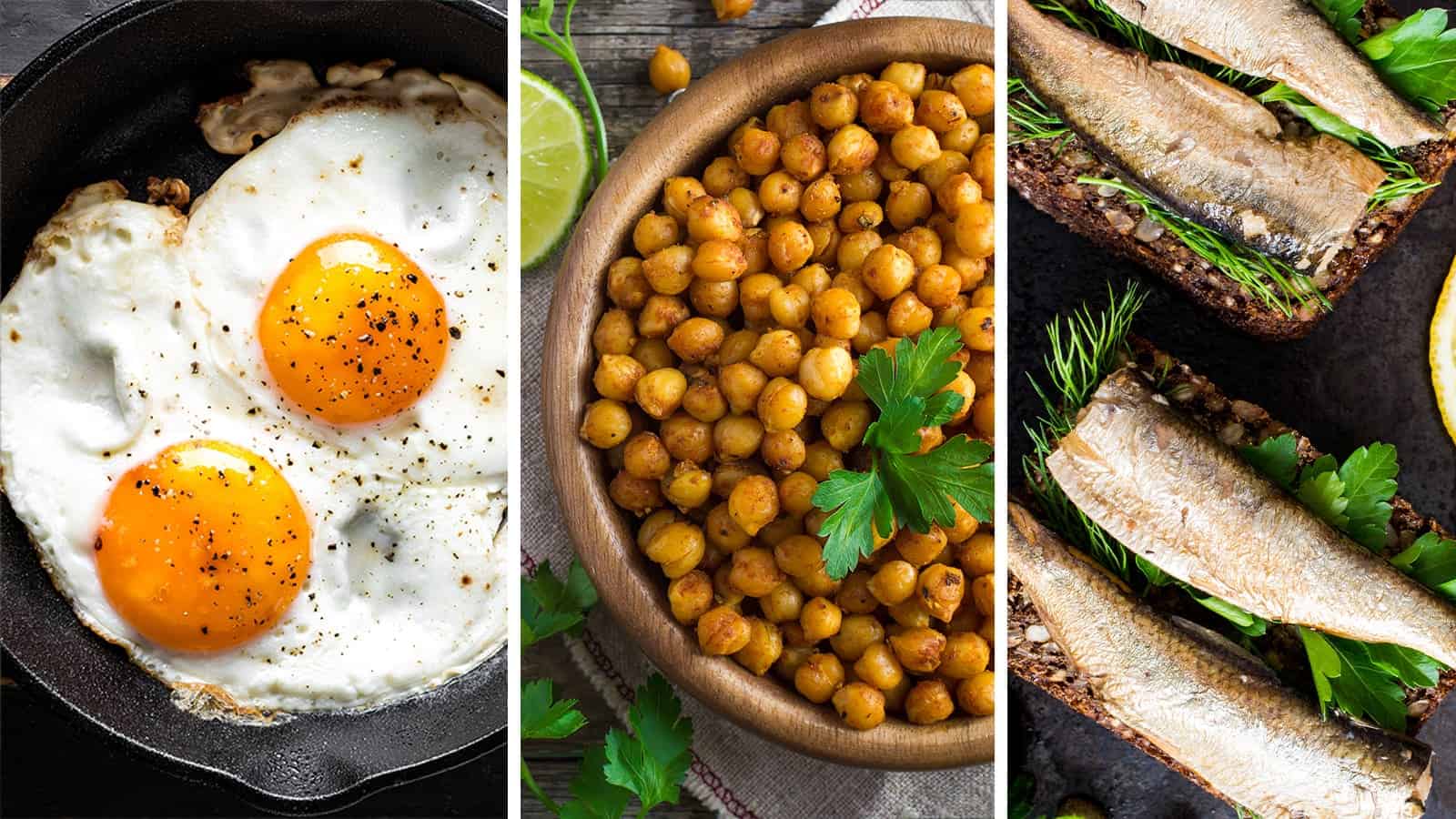Sweet potatoes are sugary and starchy root vegetables that are grown globally. They come in various sizes and colors such as purple, white, and orange.
Also rich in fiber, antioxidants, minerals, and vitamins, these nutrients offer some great health advantages. You can easily include sweet potato in your diet.
Here are twelve great benefits of sweet potato.

1. Very Nutritious
Sweet potatoes have plenty of minerals, vitamins, and fiber. About 200 grams of baked sweet potato (with the skin) offers 50 percent of the daily requirement of manganese. It also contains 180 calories, four grams of proteins, and 6.6 grams of fiber. Finally, this amount offers 41.4 grams of carbs, 0.3 grams of fat, 65 percent of the daily requirement of vitamin C, and an impressive 769 percent of the daily value of vitamin A.
Moreover, the purple and orange varieties have antioxidants that prevent free radicals from damaging your body. Free radicals refer to unstable molecules that can harm DNA and trigger inflammation.
Damage by free radicals has been associated with chronic conditions such as cancer, aging, and heart disease. Hence, consuming foods rich in antioxidants supports your health.
2. Supporting the Immune System
Sweet potatoes offer one of the richest organic sources of beta-carotene, a plant-based compound that converts to vitamin A in your body. Vitamin A is essential to a healthy immune system; a low immunity has been associated with low levels of blood.
It is also important for the maintenance of healthy mucous membranes, particularly in your gut lining. Inside your gut, your body is susceptible to many potential pathogens that result in diseases. Hence, a healthy digestive system is an essential part of an immune system that is healthy.
According to research, the lack of vitamin A can result in gut inflammation and reduced ability of the immune system to respond well to potential threats.
3. Enhanced Brain Function
Another one of the many benefits of sweet potato, especially purple sweet potatoes, is the improvement of the function of the brain. According to animal studies, the anthocyanins present in purple sweet potatoes can assist in safeguarding your brain by preventing free radical damage and minimizing inflammation.
Consuming anthocyanin-rich sweet potatoes has been proved to improve memory and learning in mice, potentially as a result of its antioxidant properties. However, there is no availability for human research. But overall, a diet filled with antioxidants, vegetables, and fruits links to a 13 percent reduced risk of dementia and mental decline.
4. Healthy Eyesight
Sweet potatoes have high levels of beta-carotene, an antioxidant linked to the sweet potato’s bright orange color. About 200 grams of a baked orange sweet potato (with skin) offers over seven times the quantity of beta-carotene that an average adult requires per day. Beta-carotene converts to vitamin A in the body and helps in the formation of light-detecting receptors inside the eyes.
Severe deficiency of vitamin A is a problem in developing nations and can result in a special blindness type called xerophthalmia. Consumption of foods with beta-carotene like orange-fleshed sweet potatoes can help prevent this condition.
Purple sweet potatoes also provide eyesight benefits. According to test-tube studies, anthocyanins offered by sweet potatoes assist in the protection of eye cells from damage, which can be crucial to the general eye health.
5. Fighting Cancer
Sweet potatoes provide a lot of antioxidants that can assist in safeguarding against particular types of cancer. Anthocyanins, a kind of antioxidants present in purple sweet potatoes, reduce the speed of growth of specific kinds of cancer cells. This includes those of the colon, breast, bladder, and stomach – according to test-tube studies.
Similarly, mice fed on purple sweet potatoes revealed minimized rates of early-stage cancer of the colon. This suggests that the anthocyanins present in the sweet potatoes may possess a protective impact.
Extracts of sweet potato peels also possess anti-cancer properties during test-tube studies. However, there is still a need for human research.
6. Improved Gut Health
Among the multiple enriching benefits of sweet potato is the promotion of the health of the digestive system. The antioxidants and fiber in sweet potatoes benefit the health of your gut. This vegetable has two fiber types including insoluble and soluble fiber.
Your body cannot digest either fiber type. Hence, the fiber remains inside the gut and offers various health advantages related to the gut. Particular types of soluble fiber called viscous fibers absorb water and make your stool soft.
On the contrary, the insoluble fibers are non-viscous and fail to absorb water but add to the bulk of the stool. Some insoluble and soluble fibers are fermented by bacteria inside the colon, which creates compounds referred to as short-chain fatty acids that act as fuel for the intestinal wall cells to keep them strong and healthy.
Consumption of diets with 20-33 grams of fiber daily have been associated with a minimized likelihood of colon cancer. It also helps support regular bowel movements. The antioxidants in the sweet potatoes may also offer gut benefits. According to research, antioxidants present in purple sweet potatoes help fuel the growth of healthy bacteria in the gut, including Lactobacillus and Bifidobacterium species.
Greater numbers of these bacteria types within the intestines are linked to lower risks of conditions such as infectious diarrhea and irritable bowel syndrome as well as better gut health.
7. Improved Fertility
The high levels of vitamin A present in sweet potatoes make them perfect for women who looking for enhanced fertility. According to research, vitamin A plays a vital role in boosting reproductive performance. Studies reveal that deficiency in vitamin A can result in secondary fertility in women of childbearing age.
Sweet potatoes are also rich in iron, an essential mineral in promoting fertility in women of childbearing age. Studies have revealed that iron deficiency or anemia can cause infertility in women. These studies have proved that treating the anemia by increasing the consumption of iron-rich foods normally leads to women having the ability to conceive within a year of treatment.
Other research shows that an increase in the consumption of foods rich in iron minimizes the risk of ovulatory infertility.
8. Blood Pressure Regulation
Sweet potatoes can also assist in the control of blood pressure since they have high levels of potassium and magnesium. According to research, consumption of potassium leads to minimized blood pressure, which then critically reduces the likelihood of a person developing a coronary issue or stroke.
Magnesium is also deemed an efficient dietary component when it comes to the prevention of hypertension together with its decrease in both non-pregnant and pregnant patients.
9. Weight Management
Sweet potatoes have fermentable and soluble fiber that boosts satiety and provides the body with a natural and self-sustaining system for the regulation of body weight. According to studies, pectin is a soluble dietary fiber present in sweet potatoes that effectively minimizes food consumption, reduces weight gain, and boosts the activity of satiety hormones in the body.
Studies have revealed that higher consumption of fibers strongly links to decreased body weight. A heightened consumption of sweet potatoes will lead to an increase your fiber intake, which will then reduce your weight.
10. Improved Hair
Sweet potatoes have vitamin E. Research shows that the consumption of foods that have vitamin E can significantly help people who have hair loss. This is because the vitamin has antioxidant properties that assist in reducing oxidative stress, which causes alopecia.
11. Improved Skin
Vitamin C also offers efficient dermatological treatment against hyperpigmentation and photoaging. The vitamin also efficiently neutralizes the oxidative stress that you get from being exposed to UV light. Moreover, the mixture of vitamin C and E can critically minimize the risk of skin cancer in people.
Vitamin C is also crucial in the production of collagen, which is the skin’s primary structural protein. Some studies have revealed that vitamin C has anti-inflammatory properties. This means that the vitamin can assist in the management of skin diseases like acne and enabling the healing of skin wounds.
12. Prevention of Ulcers
An ulcer takes place when an inflamed tissue is shed from the skin or mucous membrane, and it can be excruciating. According to research, methanol extract from a sweet potato’s root can safeguard the gastrointestinal tissues from ulcers induced by aspirin. Hence, sweet potatoes can aid in the management and treatment of peptic ulcers.
Another research revealed that sweet potato root flour assisted in the prevention of stomach ulcers related to ethanol. The flour suppressed gastric ulcers by minimizing swelling in the surrounding tissues and safeguarding the gastric wrinkles. Moreover, sweet potato extracts possess free radical scavengers that are crucial in healing of internal wounds.
Final Thoughts on Eating Sweet Potatoes
Whether you are looking to enjoy improved eyesight, digestion, ulcers, blood pressure, or any other benefits of sweet potato in this list, then you are sure to be better with the consumption of sweet potatoes. What’s more, you can easily include this tuber into your meal plan. Whether fried, boiled, or baked, they offer a delicious and healthy option.
If you want your health to improve, then the minerals in this vegetable will ensure you get exactly that.











